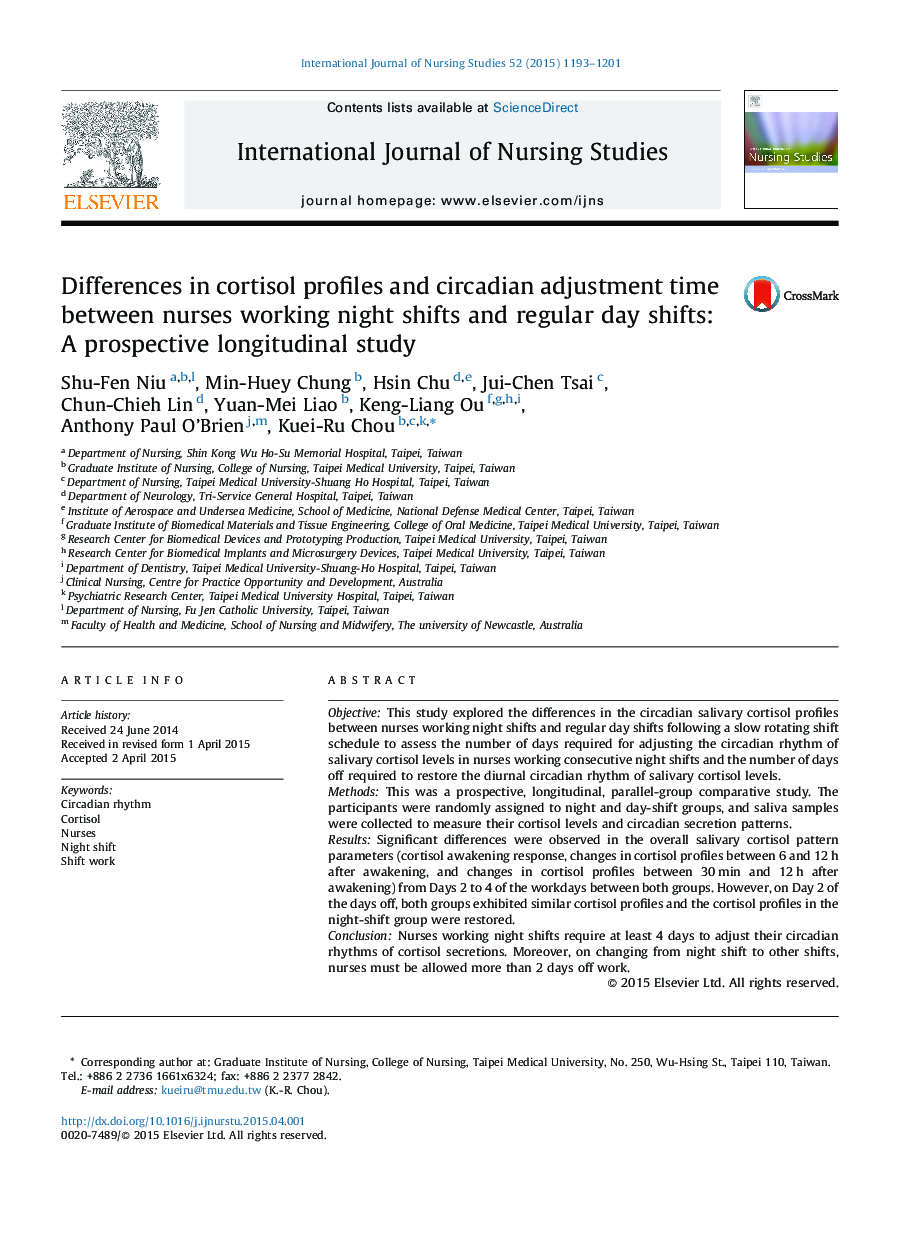| Article ID | Journal | Published Year | Pages | File Type |
|---|---|---|---|---|
| 1076242 | International Journal of Nursing Studies | 2015 | 9 Pages |
ObjectiveThis study explored the differences in the circadian salivary cortisol profiles between nurses working night shifts and regular day shifts following a slow rotating shift schedule to assess the number of days required for adjusting the circadian rhythm of salivary cortisol levels in nurses working consecutive night shifts and the number of days off required to restore the diurnal circadian rhythm of salivary cortisol levels.MethodsThis was a prospective, longitudinal, parallel-group comparative study. The participants were randomly assigned to night and day-shift groups, and saliva samples were collected to measure their cortisol levels and circadian secretion patterns.ResultsSignificant differences were observed in the overall salivary cortisol pattern parameters (cortisol awakening response, changes in cortisol profiles between 6 and 12 h after awakening, and changes in cortisol profiles between 30 min and 12 h after awakening) from Days 2 to 4 of the workdays between both groups. However, on Day 2 of the days off, both groups exhibited similar cortisol profiles and the cortisol profiles in the night-shift group were restored.ConclusionNurses working night shifts require at least 4 days to adjust their circadian rhythms of cortisol secretions. Moreover, on changing from night shift to other shifts, nurses must be allowed more than 2 days off work.
